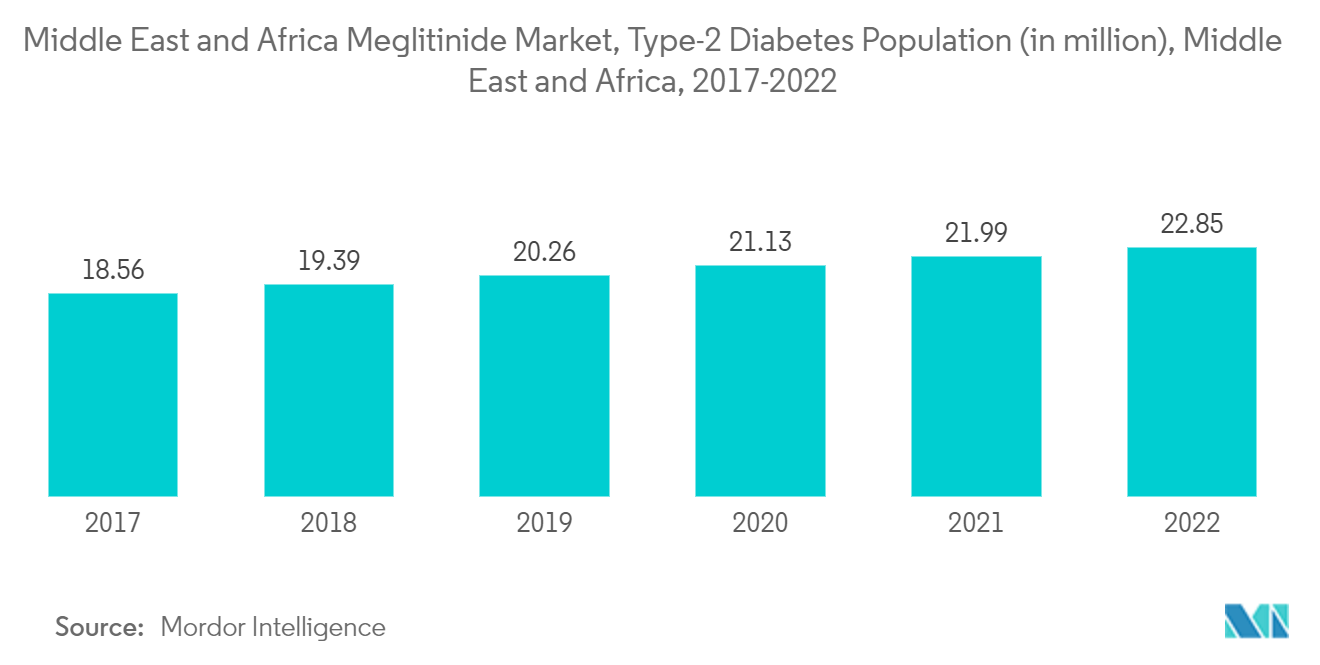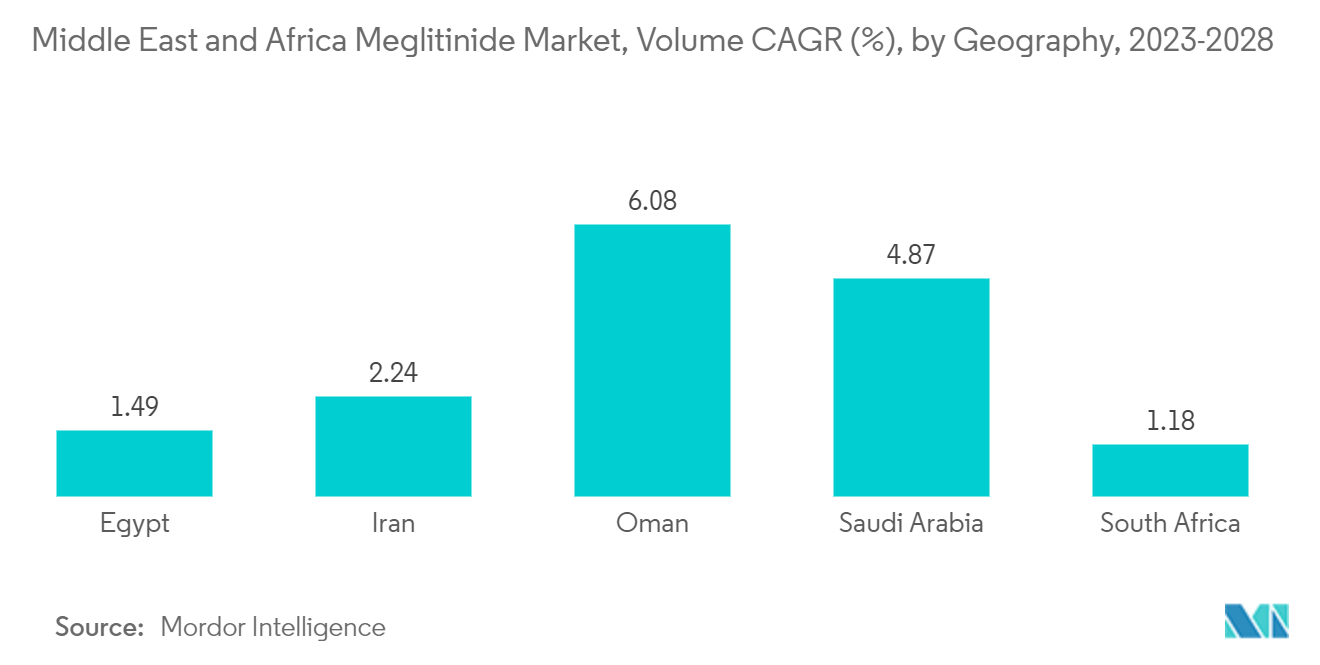Market Trends of Middle East And Africa Meglitinide Industry
Rising Diabetes Prevalence in Middle East and Africa Region
The diabetes population in the Middle East and Africa region is expected to rise by more than 3.5% over the forecast period. 73 million adults lived with diabetes in the IDF MENA region in 2021. This figure is estimated to increase to 95 million by 2030. 48 million adults in the IDF MENA Region live with impaired glucose tolerance, which places them at increased risk of developing type-2 diabetes. Technological advancements have increased over the years in insulin delivery devices for safer and more accurate administration of insulin.
Governments in the ME have identified the threat of diabetes and started to respond with various policies, initiatives, and programs. Six out of 15 countries in this region still do not have a national operational action policy for diabetes. Many countries still do not have a national strategy to reduce overweight, obesity, and physical inactivity, which are important risk factors for diabetes. Most counties have fully implemented national diabetes treatment guidelines. However, constant measures are being taken to minimize diabetic complications; therefore, owing to the aforementioned factors, the growth of the studied market is anticipated in the Middle East and Africa region.

Saudi Arabia is Expected to Dominate the Middle-East and Africa Meglitinides Market.
Diabetes is one of the mounting health problems the country is facing. Saudi Arabia is ranked among the top three Middle Eastern and African countries with the highest prevalence of diabetes. The diabetes population in Saudi Arabia increased from 1.48 million in 2012 to 5.95 million in 2021 and is expected to reach more than 8 million by 2027. The type-1 diabetes population in the country is projected to reach more than 0.5 million by 2027, up from 0.39 million in 2021.
Saudi Arabia is aiming to reduce the prevalence of the disease by 10% over the next decade. The government is taking on a number of initiatives to stop the epidemic from spreading, such as taxing sugary drinks, promoting physical fitness, and emphasizing preventative care. The government's focus on combating diabetes and the higher purchasing power of the people in the country may help the market for diabetes drugs, like insulin drugs, during the forecast period.
Meglitinides, for example, bind to the sulfonylurea receptor in beta cells (pancreatic insulin-producing cells), but at a different site than sulfonylureas. Meglitinides' interaction with the receptor is not as "tight" as that of sulfonylureas, resulting in a much shorter duration of action and a higher blood glucose level required before the drugs produce pancreatic insulin secretion. There are currently two meglitinides available in the Middle East and Africa region: repaglinide (Prandin) and nateglinide (Starlix). Both are approved for use in type-2 diabetes patients, both alone and in combination with other oral diabetes medications. The main effect of meglitinides is to lower after-meal blood glucose levels, which results in a lower HbA1c (an indicator of blood glucose control over the previous 2-3 months).
Owing to the aforementioned factors, the market is expected to grow during the forecast period.

